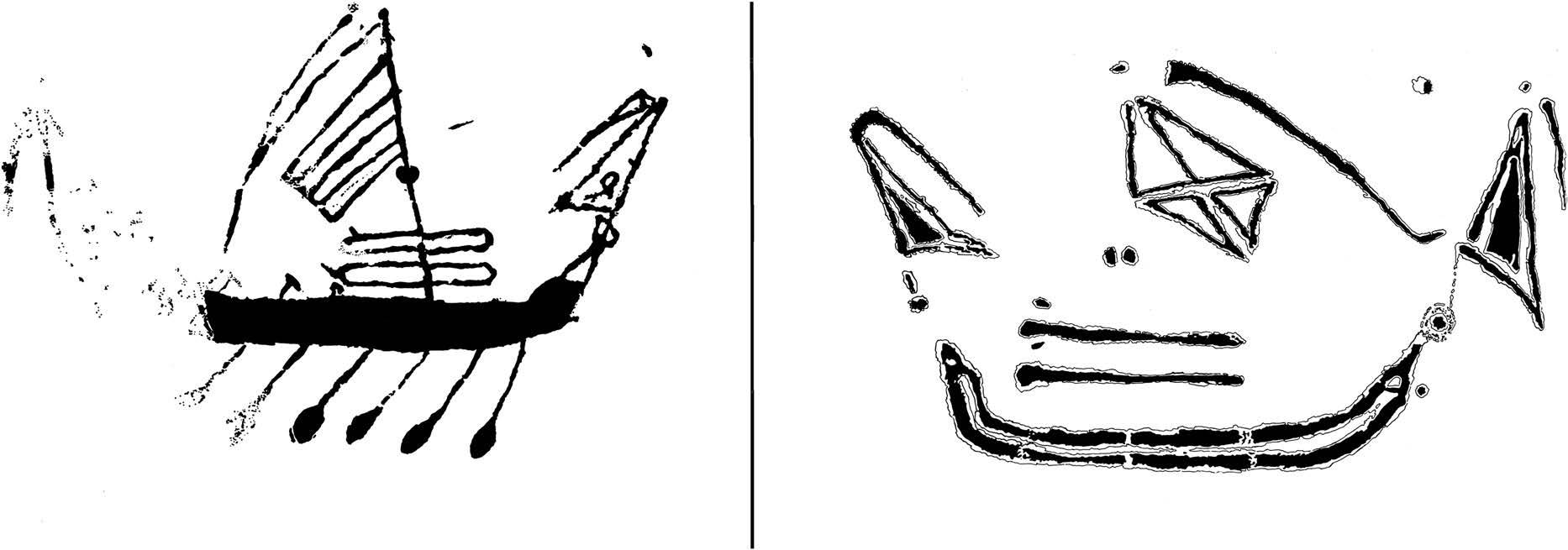Lillian Rangiah
Source - https://www.abc.net.au/news/2023-05-28/nt-moluccan-boat-arnhem-land-rock-art/102400042
 This ceremonial perahu (boat) from the Maluku Islands is a similar design to those depicted in rock art in north-western Arnhem Land.(Supplied: Flinders University)
This ceremonial perahu (boat) from the Maluku Islands is a similar design to those depicted in rock art in north-western Arnhem Land.(Supplied: Flinders University)
Archaeologists believe they have solved the decades-long mystery surrounding two boats depicted in north-western Arnhem Land rock art.
At Awunbarna, also known as Mount Borradaile, the rock shelters are decorated with paintings of European ships, guns, fish, prawns and macropods.
But since the 1970s, two specific paintings of boats have stood out as different to western archaeologists.
Researchers from Flinders University have this month published findings that suggest the art depicts ships from the Maluku Islands — previously known as the Moluccas — in Indonesia, which could have reached Australian shores prior to colonisation.
The authors, lead researcher Dr Mick de Ruyter, Professor Daryl Wesley and Associate Professor Wendy van Duivenvoorde, said the work deepens Australia's understanding of how its first people interacted with foreign visitors.
"Just these two craft suddenly add another dimension to the sphere of interaction of northern Australia – that Australia is not just some sort of land that's on its own, in the middle of nowhere and is cut off for 65,000 years from everywhere else," co-author Professor Daryl Wesley said.
"It's another part of that story of Indigenous people having a role with peoples to the north," he said.
 Researchers believe these drawings of two cave paintings in Arnhem Land, depict vessels from the Maluku Islands in Indonesia.(Supplied: Flinders University)
Researchers believe these drawings of two cave paintings in Arnhem Land, depict vessels from the Maluku Islands in Indonesia.(Supplied: Flinders University)
Paintings likely of 'warships'
Archaeologists have previously identified paintings of fishing boats from Macassar, Indonesia that came to trade, and later, the ships of European colonists.
But these Moluccan boats appear ceremonial, which Dr Wesley suggests means they could have possibly been used for raids, trade or potentially slavery.
 A decorative prow board on a Moluccan boat.(Supplied: Flinders University)
A decorative prow board on a Moluccan boat.(Supplied: Flinders University)
"They're fighting craft, decorated with all these pennants and flags and other elements that really set them apart from your usual trading or fishing vessels," he said.
"That is really different to our understanding of all the other Macassan ships that are in rock art and in Arnhem Land," Dr Wesley said.
He said the level of detail in the paintings suggests the Indigenous artists who painted the Moluccan ships spent time up close with the boats.
"The thing that is really interesting to us is the detail that [the Indigenous artists] have been able to capture of these ships – that just doesn't suggest a fleeting view from the shoreline," he said.
"They've gotten so many things correct about the paddles, the prowl boards, all the pennants and everything in decorative details of the ship."
Travel between Arnhem Land and Maluku
Professor Sue O'Connor, who was not involved in the study, said the findings suggested some Indigenous Australians may have left the mainland for Maluku, which is part of the Indonesian archipelago.
"Either this demonstrates that we've had that craft visiting the Arnhem Land shores or people from Arnhem Land going to them in the Moluccan region and seeing crafts there and coming back and painting them," she said.
 Archaeologists believe two "warships" depicted in rock art in north-west Arnhem land are from the Maluku Islands.(Supplied: Flinders University)
Archaeologists believe two "warships" depicted in rock art in north-west Arnhem land are from the Maluku Islands.(Supplied: Flinders University)
Traces of an overseas settlement of Indigenous Australians have been identified in Macassar, and Dr O'Connor said it was possible a similar settlement existed in Maluku.
Distinguished Professor Paul Tacon wasn't involved in this article, but is working with Dr Wesley and a multi-disciplinary team of researchers on a project to investigate the way Aboriginal people in Northern Australia recorded contact with foreign visitors.
He said the findings of this study suggest archaeologists should take a "fresh look" at other rock paintings depicting "curious" watercraft across Arnhem Land, and excavations across Australia's north.
"We may well find that there are things from those excavations that point to other areas of south-east Asia as well," he said.